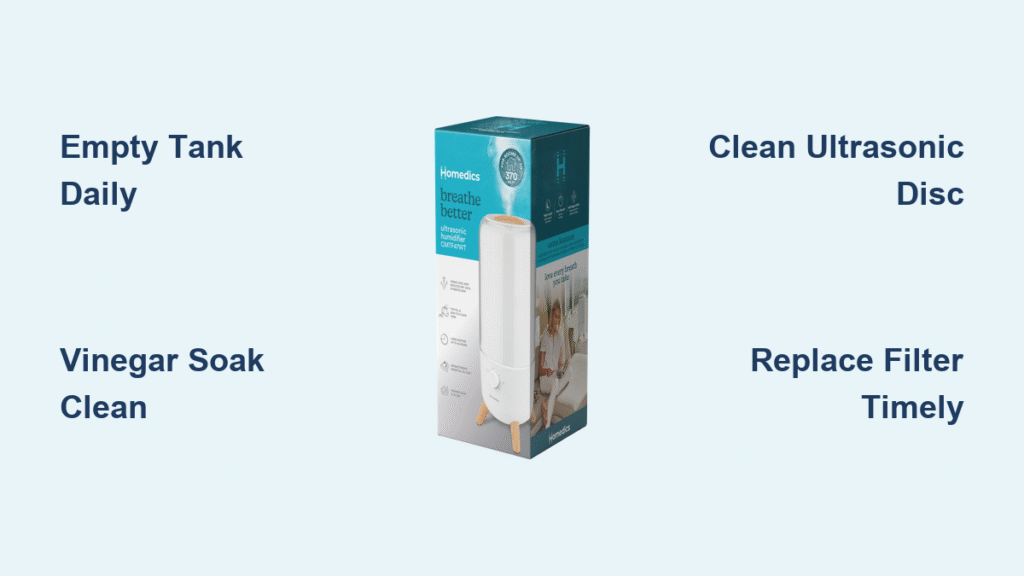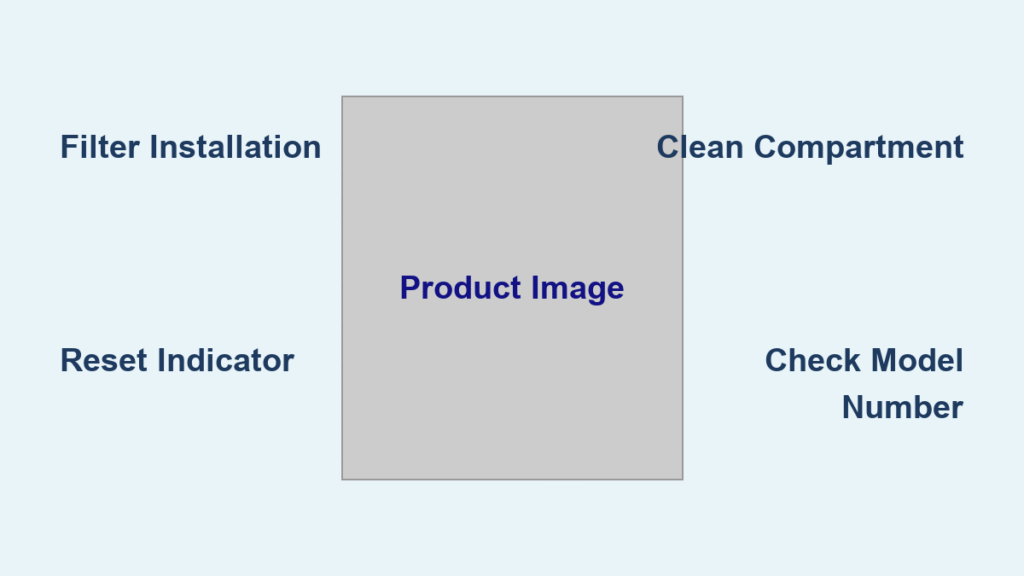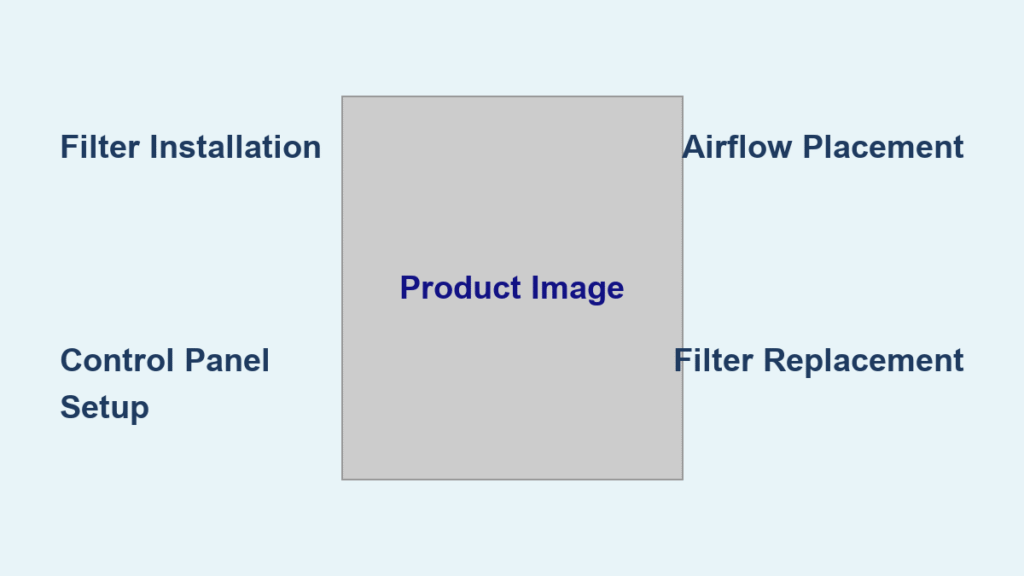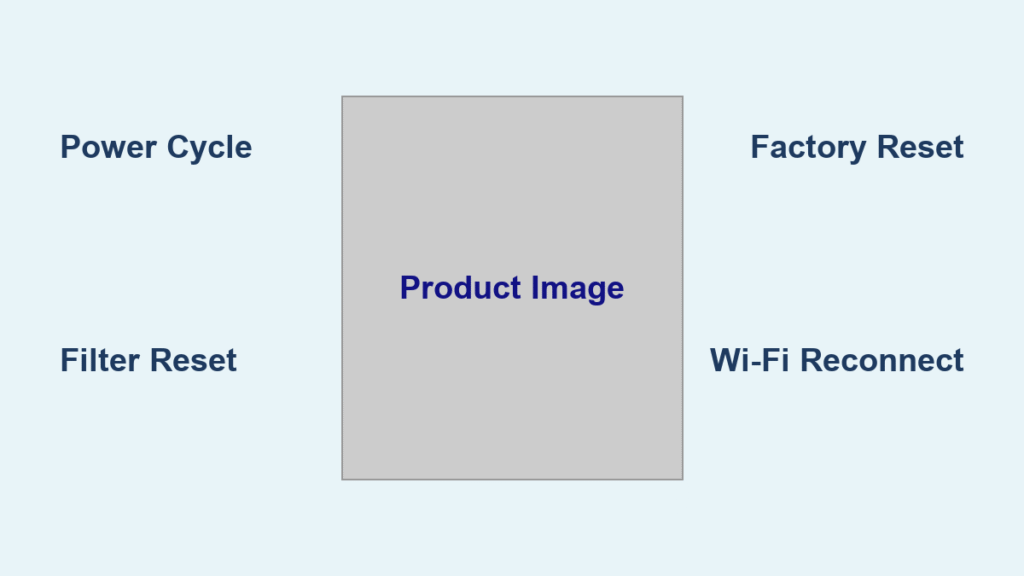That comforting mist from your Homedics humidifier turns toxic when mineral buildup and bacteria take over. If you’ve noticed white dust coating your furniture or a musty smell during operation, your unit is spraying contaminated moisture into your home air. Most users mistakenly think replacement is the only solution when performance declines, but proper cleaning takes just 20 minutes and can double your humidifier’s lifespan. This guide delivers Homedics’ exact cleaning protocol plus field-tested strategies to eliminate stubborn deposits—all without damaging delicate components. You’ll learn how to deep-clean every critical part using affordable household items while avoiding costly mistakes that ruin ultrasonic discs.
Ignoring regular maintenance creates serious health risks—stagnant water breeds bacteria like Legionella that become airborne with each mist cycle. The white crust lining your tank isn’t just unsightly; it’s a mineral fortress harboring pathogens. Proper cleaning isn’t optional maintenance—it’s essential for breathing safe, clean air during dry seasons. Follow these steps to restore optimal performance and protect your household’s respiratory health.
Empty and Unplug Before Any Cleaning
Power disconnection is non-negotiable—water contacting electrical components risks severe shock. Always unplug your unit and drain every drop from the tank and base reservoir before proceeding.
Remove Every Detachable Component Immediately
- Twist the water tank counterclockwise to release it from the base
- Extract the filter cartridge or demineralization stick
- Detach the mist nozzle cap and essential oil tray (if applicable)
- Set all parts on a clean towel for individual cleaning
Eliminate Hidden Stagnant Water
Tip the base upside down over your sink for 60 seconds. Most Homedics models trap 1-2 ounces in internal chambers—this neglected water breeds the most dangerous bacteria colonies. Gently shake the unit to dislodge trapped moisture from corners. Never skip this step; residual water contaminates your entire cleaning process.
Deep Clean Water Tank With Vinegar Soak

Mineral deposits bond aggressively to plastic surfaces. Your weapon against limescale: undiluted white vinegar’s acetic acid, which dissolves deposits without scratching.
Execute the Vinegar-Baking Soda Soak
- Fill the tank halfway with undiluted white vinegar (no water dilution)
- Add 1 tablespoon baking soda to trigger effervescent action
- Let the mixture bubble against deposits for 25 minutes
- Scrub all interior surfaces with a bottle brush—pay special attention to threads
- Rinse under running water 4 times until vinegar odor completely disappears
Pro tip: Microwave the vinegar for 30 seconds before use. Warm vinegar accelerates mineral dissolution by 40%—critical for thick white scale in hard water areas. Always cool it slightly before handling.
Remove Persistent White Film Residue
Dampen a paper towel with vinegar and rub in circular motions following the plastic grain. For deposits around the cap threads, wrap the towel around a toothbrush for precision cleaning. Focus on corners where minerals accumulate fastest—these spots reduce mist output when neglected.
Disinfect Base Unit Without Electrical Damage
The base reservoir is a bacteria breeding ground—warm, dark, and constantly damp. Cleaning requires precision to avoid flooding electrical components.
Perform Safe Vinegar Disinfection
- Pour 2 cups vinegar into the base (never exceed the internal dividing wall height)
- Gently swirl to coat all surfaces for 1 minute
- Let it sit 15 minutes to kill mold and bacteria
- Clean ultrasonic disc areas with cotton swabs dipped in vinegar
- Rinse thoroughly until water runs completely clear
Critical warning: Never submerge the entire base unit. Electrical components sit below the dividing wall—excess liquid causes permanent short circuits. Keep vinegar levels strictly below this barrier.
Clean Ultrasonic Disc Safely

Locate the small metal disc (center of the base reservoir). Dip a cotton swab in vinegar and gently wipe the surface—no scrubbing pressure needed. Aggressive cleaning damages the transducer. Finish by drying with a microfiber cloth to prevent water spots.
Maintain Filters for Optimal Airflow

Homedics filters trap minerals but become hazardous when saturated. Proper care prevents musty odors and maintains mist output.
Determine Filter Replacement vs. Cleaning
- Replace immediately if discoloration turns gray, texture feels slimy, or odors persist
- Rinse only if the filter remains bright white and odor-free
- Typical lifespan: 45 days in average water hardness (7-10 grains)
Rinse Reusable Filters Correctly
- Hold under lukewarm running water for 60 seconds
- Gently squeeze the filter to release trapped minerals (never twist)
- Air-dry vertically for 48 hours in a well-ventilated area
- Store completely dry in a sealed container between uses
Never use soap—it degrades the antimicrobial coating within hours. Soap residue creates bacterial breeding grounds that accelerate filter failure.
Reassemble Components to Prevent Leaks
Incorrect reassembly causes leaks, weak mist, or component damage. Verify every seal before operation.
Inspect Seals and Gaskets Thoroughly
Check rubber gaskets for cracks or mineral crust. Wipe clean with a vinegar-dampened cloth before reinstalling. Ensure the filter sits perfectly flush—crooked placement blocks mist channels and strains the motor.
Conduct Safety Test Run
Fill the tank with fresh water and operate for 10 minutes in your bathroom. Watch for:
– Consistent mist output (no sputtering)
– Zero leaks from base seams
– Smooth operation without unusual vibrations
If issues appear, disassemble immediately and recheck component alignment.
Prevent Deep Cleaning With Weekly Habits
Consistent micro-maintenance eliminates monthly deep cleans. These 5-minute routines stop buildup before it starts.
Daily Water Management Protocol
Empty the tank every 24 hours—never “top off” existing water. Refill only with fresh water to prevent bacterial multiplication. Stagnant water becomes unsafe within 12 hours.
Weekly Maintenance Checklist
- Spray vinegar mist through the unit for 2 minutes
- Wipe tank exterior with microfiber cloth
- Leave base upside down overnight to air-dry completely
- Set phone reminders for consistent execution
Avoid Permanent Damage From Common Errors
These mistakes permanently destroy humidifiers—recognize and eliminate them immediately.
Chemical Damage Prevention
Never use bleach—it corrodes ultrasonic discs within 3 uses. Skip ammonia-based cleaners—they create toxic chloramine gas when mixed with vinegar residue. Don’t dishwasher parts—heat warps plastic tanks and cracks seals.
Rinse Until Vinegar-Free
Incomplete rinsing leaves white dust on furniture. Run clean water through the unit for 5 minutes post-cleaning. Conduct a sniff test—if you detect vinegar, rinse 3 more times. Residual acid damages internal components over time.
Troubleshoot Post-Cleaning Performance Issues
Weak mist or odors after cleaning indicate specific problems requiring immediate action.
Fix Weak Mist Output Fast
Recheck filter alignment—crooked filters reduce water flow by 70%. Verify water level covers the minimum line. If problems persist, clean the ultrasonic disc again; mineral films return rapidly in hard water zones.
Eliminate Lingering Musty Smells
Run 1 cup vinegar through a full misting cycle. Air-dry all components for 48 hours in direct sunlight. If odors remain, replace the filter immediately—it’s harboring embedded bacteria.
Extend Cleaning Intervals With Smart Upgrades
Strategic adjustments reduce cleaning frequency by 60% while improving air quality.
Optimize Water Quality Immediately
Install an affordable faucet filter for tap water users. Use refrigerator-filtered water when possible—it cuts mineral content by 50%. In extreme hard water areas, consider distilled water delivery services to prevent 90% of buildup.
Position for Maximum Longevity
Place your humidifier on an elevated surface away from air vents. Vents blow dust into the unit, accelerating clogs. Run shorter cycles (4 hours) twice daily instead of marathon 12-hour sessions to reduce mineral accumulation.
Follow this maintenance schedule religiously:
– Daily: Empty and refill tank
– Weekly: Vinegar mist cycle and exterior wipe
– Monthly: Full disassembly and deep clean
– Quarterly: Replace filters and inspect seals
Your Homedics humidifier now delivers pure, bacteria-free mist that actually improves indoor air quality. Consistent cleaning prevents the mineral scaling that destroys 80% of units prematurely—no expensive replacements needed. Mark monthly deep cleans on your calendar; this 20-minute ritual protects your respiratory health while saving hundreds in replacement costs. Breathe easy knowing your family inhales only clean moisture, not hidden contaminants.

